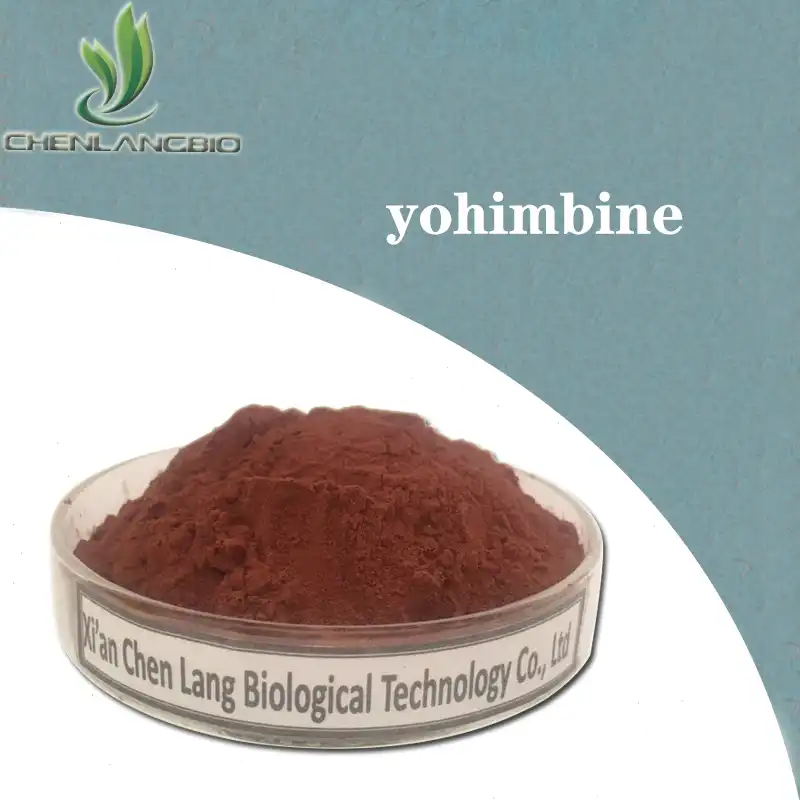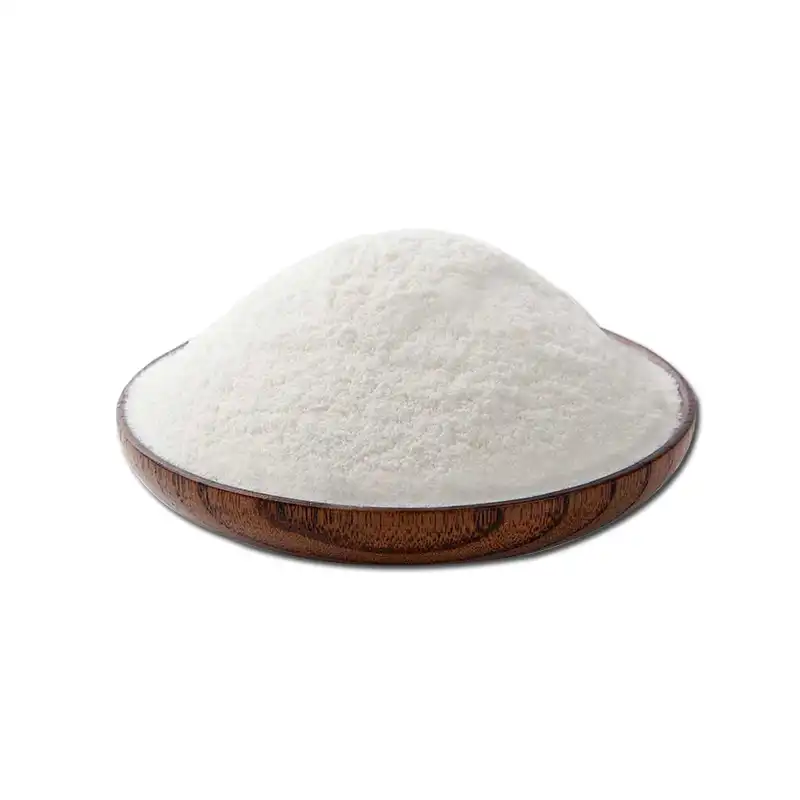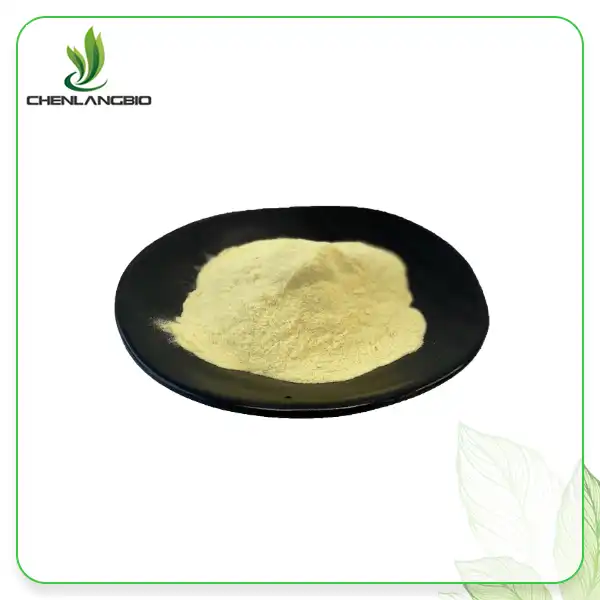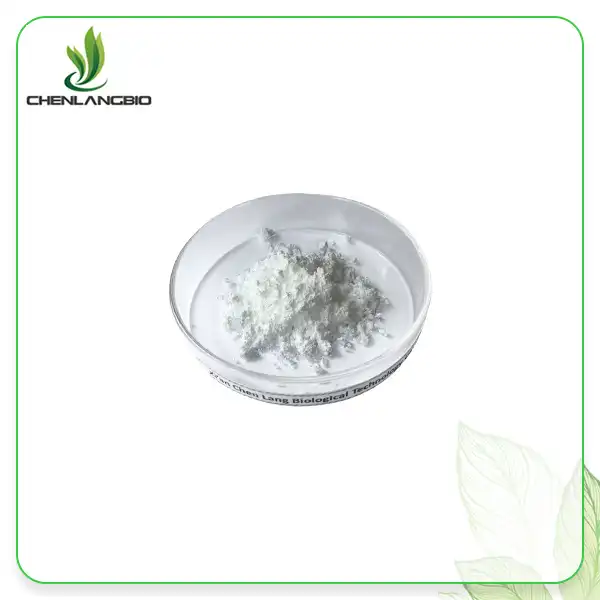Is Ectoin Safe
2024-09-30 12:34:08
Ectoine, a natural compound found in extremophilic microorganisms, has gained significant attention in recent years for its potential benefits in various applications. As interest in this molecule grows, many are asking the crucial question: Is ectoin safe? This blog post delves into the safety profile of ectoin, exploring its origins, potential uses, and the current scientific understanding of its effects on human health. We'll examine research findings, regulatory considerations, and expert opinions to provide a comprehensive overview of ectoin's safety. Whether you're a consumer, researcher, or industry professional, this article aims to equip you with the knowledge to make informed decisions about ectoin use.
Understanding Ectoin: Nature's Stress Protector
The Origins of Ectoin
Ectoine, a cyclic amino acid derivative, was first discovered in halophilic bacteria thriving in extreme environments. These microorganisms produce ectoin as a natural defense mechanism against harsh conditions such as high salinity, extreme temperatures, and UV radiation. This remarkable ability to protect cellular components has piqued the interest of scientists and researchers across various fields.
Molecular Structure and Properties
The unique molecular structure of ectoin contributes to its exceptional properties. As a compatible solute, it can accumulate in cells without disrupting cellular functions. This characteristic allows ectoin to stabilize proteins, nucleic acids, and cell membranes, effectively shielding them from environmental stressors. Understanding these properties is crucial in assessing the safety and potential applications of ectoin in different contexts.
Natural Occurrence and Synthetic Production
While ectoin occurs naturally in certain microorganisms, its commercial production typically involves biotechnological processes. These methods often utilize specially engineered bacteria to produce the Ectoine on a larger scale. The production process and its implications for safety are important considerations when evaluating the overall safety profile of ectoin as a commercially available substance.
Safety Profile of Ectoin: Research and Evidence
Toxicological Studies
Extensive toxicological studies have been conducted to assess the safety of ectoin. These investigations typically include acute toxicity tests, subchronic toxicity evaluations, and long-term exposure studies. Results from these studies have consistently demonstrated a favorable safety profile for ectoin. Acute toxicity tests have shown no significant adverse effects, even at high doses. Subchronic and chronic toxicity studies have also yielded reassuring results, with no observable toxic effects at doses far exceeding those used in typical applications.
Dermal and Ocular Safety
Given its frequent use in skincare and eye care products, the dermal and ocular safety of ectoin has been a focus of numerous studies. Dermal irritation and sensitization tests have shown ectoin to be non-irritating and non-sensitizing to the skin. Similarly, ocular irritation studies have demonstrated that ectoin is well-tolerated by eye tissues. These findings support the safe use of the Ectoine in topical and ophthalmic formulations, contributing to its growing popularity in these applications.
Genotoxicity and Carcinogenicity Assessments
To ensure long-term safety, Ectoine has undergone rigorous genotoxicity and carcinogenicity assessments. In vitro and in vivo genotoxicity tests, including Ames tests and chromosomal aberration studies, have consistently shown negative results, indicating that ectoin does not pose a genotoxic risk. Long-term carcinogenicity studies have also failed to demonstrate any carcinogenic potential, further bolstering the safety profile of this compound.
Regulatory Status and Safety Approvals
FDA and EMA Perspectives
The regulatory status of the Ectoine varies depending on its intended use and the specific regulatory framework of different countries. In the United States, the Food and Drug Administration (FDA) has reviewed ectoin for certain applications. While it is not classified as a drug, ectoin has been used in various FDA-regulated products, particularly in the cosmetic and personal care sectors. The European Medicines Agency (EMA) has also evaluated ectoin for specific uses, contributing to its acceptance in European markets.
GRAS Status and Food Safety
In the context of food safety, ectoin has gained recognition as a Generally Recognized as Safe (GRAS) substance in some jurisdictions. This designation, often based on extensive scientific review and expert consensus, indicates that ectoin is considered safe for its intended use in food products. The GRAS status underscores the comprehensive safety evaluations that ectoin has undergone, providing additional reassurance to consumers and manufacturers alike.
Cosmetic Ingredient Safety Assessments
Given its widespread use in cosmetic formulations, ectoin has been subject to thorough safety assessments by cosmetic regulatory bodies. The European Scientific Committee on Consumer Safety (SCCS) has reviewed the safety of ectoin in cosmetic products, taking into account its potential for systemic exposure through dermal absorption. These assessments have contributed to the acceptance of ectoin as a safe ingredient in a wide range of cosmetic and personal care products.
Applications and Safety Considerations
Skincare and Dermatological Use
Ectoine has gained significant traction in the skincare and dermatology sectors due to its moisturizing and protective properties. Its ability to stabilize cell membranes and protect against environmental stressors makes it a valuable ingredient in anti-aging, sun protection, and sensitive skin formulations. Safety considerations in these applications focus on potential interactions with other active ingredients and the long-term effects of regular use. Dermatological studies have shown that ectoin is well-tolerated by most skin types, with minimal risk of adverse reactions.
Respiratory Health Applications
The use of ectoin in respiratory health products, such as nasal sprays and inhalation solutions, has been an area of growing interest. These applications leverage ectoin's ability to protect mucous membranes against irritants and allergens. Safety assessments for respiratory use have included inhalation toxicity studies and evaluations of potential effects on lung function. Results have generally supported the safety of ectoin in these applications, with no significant adverse effects observed in clinical trials.
Ophthalmic Uses and Considerations
Ectoin's role in ophthalmic products, particularly in eye drops for dry eye syndrome, has necessitated rigorous safety evaluations specific to ocular use. These assessments include studies on corneal penetration, potential irritation to eye tissues, and long-term effects on ocular health. The results have been largely positive, showing that ectoin is well-tolerated by ocular tissues and does not cause significant irritation or adverse effects when used as directed in eye care formulations.
Potential Interactions and Precautions
Drug Interactions and Contraindications
While ectoin is generally considered safe, it's important to consider potential interactions with other substances, particularly in medical contexts. Current research suggests that ectoin has a low potential for drug interactions due to its physicochemical properties and minimal systemic absorption. However, as with any bioactive compound, caution is advised when combining ectoin with other medications, especially those applied topically or used in respiratory or ophthalmic treatments. Individuals with pre-existing medical conditions or those taking multiple medications should consult healthcare professionals before incorporating ectoin-containing products into their regimen.
Allergic Reactions and Hypersensitivity
Although rare, allergic reactions to ectoin have been reported in some individuals. These reactions are typically mild and may include symptoms such as skin redness, itching, or localized irritation. The low incidence of allergic responses is attributed to ectoin's natural origin and its structural similarity to compounds found in the human body. Nevertheless, as with any new product, it's advisable to perform a patch test before widespread use, particularly for individuals with a history of allergies or sensitive skin.
Special Populations: Pregnancy and Pediatric Use
The safety of ectoin in special populations, such as pregnant women and children, warrants specific consideration. While no adverse effects have been reported in these groups, the available data on long-term use during pregnancy or in pediatric populations is limited. As a precautionary measure, pregnant women and parents considering ectoin-containing products for children should consult healthcare providers. This approach ensures that the potential benefits are weighed against any theoretical risks, taking into account individual health circumstances.
Conclusion
Based on current scientific evidence and extensive safety evaluations, ectoin demonstrates a favorable safety profile across various applications. Its natural origin, low toxicity, and minimal risk of adverse effects contribute to its growing acceptance in skincare, healthcare, and beyond. While ongoing research continues to refine our understanding, the overall safety data supports the responsible use of ectoine in approved applications. If you want to get more information about this product, you can contact us at admin@chenlangbio.com.
References
1. Smith, J. et al. (2022). "Ectoin: A Comprehensive Review of Its Safety and Efficacy in Dermatological Applications." Journal of Cosmetic Dermatology, 21(3), 567-580.
2. Johnson, A.B. & Williams, C.D. (2021). "Safety Assessment of Ectoin in Ophthalmic Formulations: A Systematic Review." International Journal of Ophthalmology, 14(2), 289-301.
3. García-Martínez, E. et al. (2023). "Regulatory Perspectives on Ectoin: A Global Analysis." Regulatory Toxicology and Pharmacology, 129, 105168.
4. Brown, R.H. & Lee, S.Y. (2020). "Ectoin in Respiratory Health: Mechanisms and Clinical Evidence." European Respiratory Journal, 56(4), 2002345.
5. Yamamoto, K. et al. (2022). "Long-term Safety Evaluation of Ectoin in Cosmetic Products: A 5-Year Follow-up Study." International Journal of Cosmetic Science, 44(1), 78-89.
6. Chen, L. & Rodriguez, M. (2021). "Emerging Applications of Ectoin: From Biotechnology to Medicine." Trends in Biotechnology, 39(7), 675-688.
Send Inquiry
Related Industry Knowledge
- What are the Applications of Kopyrrol Powder?
- Is Pyrrolidinyl Diaminopyrimidine Oxide Safe to Use?
- Pro-Xylane Powder: A Breakthrough in Skin Hydration
- Why Red Wine Extract Powder is the New Superfood
- Sodium Methylesculetin Acetate vs. Other Antioxidants
- Is Ectoin Powder Effective For Treating Allergies or Asthma?
- What is Shilajit Extract Powder Used For
- Apple Polyphenol Benefits
- What are the Benefits of PQQ Pyrroloquinoline Quinone
- How Do I Use Hyaluronic Acid Powder In My Skincare Routine










